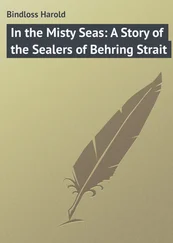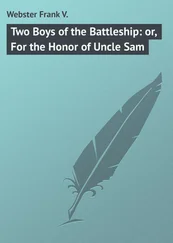Harold Wheeler - The Boys' Nelson
Здесь есть возможность читать онлайн «Harold Wheeler - The Boys' Nelson» — ознакомительный отрывок электронной книги совершенно бесплатно, а после прочтения отрывка купить полную версию. В некоторых случаях можно слушать аудио, скачать через торрент в формате fb2 и присутствует краткое содержание. Издательство: Иностранный паблик, Жанр: foreign_prose, История, foreign_edu, foreign_antique, на английском языке. Описание произведения, (предисловие) а так же отзывы посетителей доступны на портале библиотеки ЛибКат.
- Название:The Boys' Nelson
- Автор:
- Издательство:Иностранный паблик
- Жанр:
- Год:неизвестен
- ISBN:нет данных
- Рейтинг книги:3 / 5. Голосов: 1
-
Избранное:Добавить в избранное
- Отзывы:
-
Ваша оценка:
- 60
- 1
- 2
- 3
- 4
- 5
The Boys' Nelson: краткое содержание, описание и аннотация
Предлагаем к чтению аннотацию, описание, краткое содержание или предисловие (зависит от того, что написал сам автор книги «The Boys' Nelson»). Если вы не нашли необходимую информацию о книге — напишите в комментариях, мы постараемся отыскать её.
The Boys' Nelson — читать онлайн ознакомительный отрывок
Ниже представлен текст книги, разбитый по страницам. Система сохранения места последней прочитанной страницы, позволяет с удобством читать онлайн бесплатно книгу «The Boys' Nelson», без необходимости каждый раз заново искать на чём Вы остановились. Поставьте закладку, и сможете в любой момент перейти на страницу, на которой закончили чтение.
Интервал:
Закладка:
“Sir Peter Parker, soon after his arrival at Jamaica, 1778, took me into his own flag-ship, the Bristol , as third lieutenant; from which I rose by succession to be first. Nothing particular happened whilst I was in this ship, which was actively employed off Cape François, being the commencement of the French war.”
A few words with reference to the hostilities mentioned are needed as explanation. The war between Great Britain and her colonists in North America, which culminated in the birth of a new World-Power, now known as the United States, had broken out in 1775, although the seeds of dissension had been sown much earlier. This unfortunate and disastrous quarrel had also embroiled “the mother of nations” in a strife with France and Spain, whose help the New Englanders secured in 1778 and 1779 respectively. In 1780 Holland became involved. The foolishness of not having sufficiently watched the doings of a potential enemy now became apparent. For several years “resolute Choiseul, the abrupt proud man” of Carlyle, had bent his energies on increasing the French navy, and when the Brest fleet of thirty-two sail-of-the-line, under Count D’Orvilliers, met the British fleet of thirty sail, under Vice-Admiral the Hon. A. Keppel, off Ushant on the 27th July 1778, the action was indecisive. In American waters Lord Howe hove in sight of the fleet under D’Estaing, the French commander having better ships and heavier metal, but while Howe was manœuvring to attack the enemy a storm parted the would-be contestants. Both suffered considerable damage by wind and not by shot as had been anticipated. Shortly afterwards Admiral Byron took over Howe’s command and endeavoured to come up with D’Estaing’s ships. Unfortunately the Frenchman had sailed to the West Indies, which “in this protracted contest,” to use the words of Admiral Mahan, was to be “the chief scene of naval hostilities....” “The West Indies is the Station for honour,” said Nelson sometime later. Froude, the historian, predicted that “If ever the naval exploits of this country are done into an epic poem—and since the Iliad there has been no subject better fitted for such treatment or better deserving it—the West Indies will be the scene of the most brilliant cantos.” We shall have occasion to refer to this great strategic point many times in these pages, especially in the great game of hide-and-seek between Napoleon’s captains and Nelson immediately preceding the Trafalgar campaign. 8 8 See post , Chapter xix.
The year 1778 was not a brilliant one in British naval annals, although it closed by Hotham and Barrington attacking D’Estaing off St Lucia and preventing him from landing more than half the troops intended for the subjugation of that island. As a consequence the force under Chevalier de Michaud surrendered, and St Lucia was won.
“On 8 December, 1778,” Nelson continues, “I was appointed commander of the Badger brig; and was first sent to protect the Mosquito shore, and the Bay of Honduras, from the depredations of the American privateers. Whilst on this service, I gained so much the affections of the settlers, that they unanimously voted me their thanks, and expressed their regret on my leaving them; entrusting to me to describe to Sir Peter Parker and Sir John Dalling their situation, should a war with Spain break out. Whilst I commanded this brig, H.M.S. Glasgow , Captain Thomas Lloyd, came into Montego Bay, Jamaica, where the Badger was laying: in two hours afterwards she took fire by a cask of rum; and Captain Lloyd will tell you, that it was owing to my exertions, joined to his, that her whole crew were rescued from the flames.”
This stirring incident merits a more detailed description than the bare facts which Nelson chose to set forth. The crew was in a panic when he and his men set foot on the deck of the doomed vessel, and by almost superhuman exertions managed to throw all the gunpowder in the magazine overboard before the flames reached it. He also ordered that the loaded cannon should be directed upward, so that when they exploded, owing to the intense heat, no damage would result. Thus early in his career did Nelson show that he was not at a loss when the unusual and unexpected happened. In a letter to Captain Locker, who was ill, the young officer describes the fate of the Glasgow as “a most shocking sight; and had it happened half an hour later, in all probability a great many people would have been lost.” He also notes that the company of the derelict were falling ill very fast owing to the constant tropical rains to which the men were exposed, there being no room for them on the Badger .
“On 11 June, 1779,” Nelson continues, “I was made post into the Hinchinbrook . When, being at sea, and Count d’Estaing arriving at Hispaniola (Haïti) with a very large fleet and army from Martinique, an attack on Jamaica was expected. In this critical state, I was by both admiral and general entrusted with the command of the batteries at Port Royal; and I need not say, as the defence of this place was the key to the port of the whole naval force, the town of Kingston, and Spanish Town, it was the most important post in the whole island.”
D’Estaing’s fleet consisted of twenty-two sail-of-the-line, excluding transports and privateers which had attached themselves to him, and it was commonly reported that he had no fewer than 20,000 troops on board. Nelson, as noted above, was now Post-Captain, and although he had no occasion to prove his ability as a commander of land batteries, he seems to have taken kindly to the situation. In a letter to his friend Captain Parker, dated the 12th August 1779, he states that “Jamaica is turned upside down since you left it,” and furnishes particulars of the measures made for the defence of the island. “You must not be surprised to hear of my learning to speak French,” he remarks as a humorous aside.
To help to achieve the downfall of the wily d’Estaing was not to fall to Nelson’s lot. That worthy hastened to Savannah, which was attacked by troops under General Lincoln and himself. They were routed by the British lines, whereupon d’Estaing sailed away.
Great Britain was now at war with Spain, which had thrown in her lot with France, and was soon to feel the effects of the Armed Neutrality, consisting of Russia, Sweden, Denmark, Holland, and Prussia. They resented England’s right to search neutral ships, with the result that the latter Power could not retain her supremacy at sea, a cause of Cornwallis’s surrender at Yorktown and the consequent loss of the American Colonies. In January 1780 it was resolved to make an attempt to take the important post of Fort San Juan, on the river of that name. This would materially aid the British to secure the city of Granada, on Lake Nicaragua, and to sever the communications of the enemy between their northern and southern dominions. The idea originated with Dalling, Governor of Jamaica, to whom history has scarcely done justice. The naval force was entrusted to Nelson, the command of the troops to Captain John Polson.
The soldiers at the disposal of the intrepid adventurers were a mere handful, scarcely 500 in all, but perhaps that fact added the necessary spice of danger. Nelson left his ship, and “carried troops in boats one hundred miles up a river, which none but Spaniards since the time of the buccaneers had ever ascended,” to use his own words. He “boarded” an outpost of the enemy, situated on an island in the river; “made batteries, and afterwards fought them, and was a principal cause of our success.” When the miniature expedition arrived at Fort San Juan the rainy season had commenced, bringing malaria in its train. Nelson was all for making an immediate attack, but Polson ruled the slower, and perhaps surer, method of erecting batteries and so forth, in which Nelson lent a willing hand. “I want words to express the obligations I owe to Captain Nelson,” Polson told Governor Dalling. “He was the first on every service, whether by day or night. There was not a gun fired but was pointed by him, or by Captain Despard, Chief Engineer.” Fever played havoc with the men; of the 200 sailors of the Hinchinbrook , no fewer than “eighty-seven took to their beds in one night; and of the two hundred, one hundred and forty-five were buried in mine and Captain Collingwood’s 9 9 Nelson’s successor and friend.
time: and I believe very few, not more than ten, survived of that ship’s crew; a proof how necessary expedition is in those climates.” Nelson’s own health was undermined by dysentery. A few hours before the Spanish flag gave place to the Union Jack he left the region of the fort in order to join the Janus (44 guns), of which he had been given command. The ship being stationed at Jamaica, he was taken to Port Royal in a sloop. Here he met with a good and tender-hearted friend in Lady Parker, the wife of Sir Peter Parker, Commander-in-Chief at Jamaica, but he gained so little in strength that he was compelled to ask leave of absence and leave the West Indies for England. Had he stayed it is improbable that he could have rendered useful service while in such a low condition. The expedition eventually ended in failure. He sailed on the 4th September 1780 in the Lion , commanded by Captain the Hon. William Cornwallis, a younger son of Earl Cornwallis, who acted the part of nurse to the patient’s entire satisfaction, and cemented a friendship which lasted until Nelson’s death.
Интервал:
Закладка:
Похожие книги на «The Boys' Nelson»
Представляем Вашему вниманию похожие книги на «The Boys' Nelson» списком для выбора. Мы отобрали схожую по названию и смыслу литературу в надежде предоставить читателям больше вариантов отыскать новые, интересные, ещё непрочитанные произведения.
Обсуждение, отзывы о книге «The Boys' Nelson» и просто собственные мнения читателей. Оставьте ваши комментарии, напишите, что Вы думаете о произведении, его смысле или главных героях. Укажите что конкретно понравилось, а что нет, и почему Вы так считаете.












